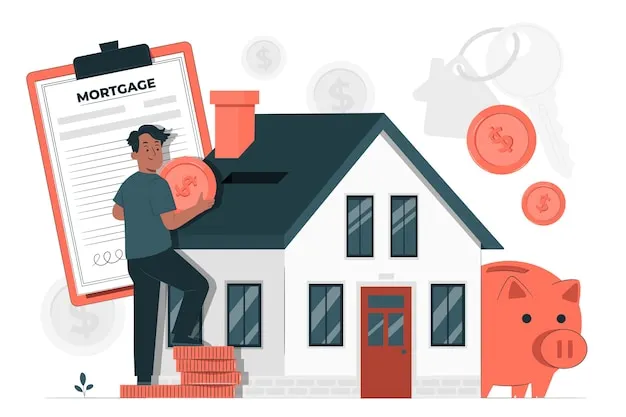In 2025, the mortgage landscape is changing faster than ever. With economic shifts, inflation adjustments, and digital lending innovations, securing the best mortgage rate requires more than just good timing—it demands smart strategy. Even a 0.5% difference in your mortgage rate can mean thousands of dollars in savings over the life of your loan.
Understanding Mortgage Rates
What Determines Mortgage Rates
Mortgage rates are influenced by a mix of factors—economic trends, inflation rates, and Federal Reserve policies. Lenders also assess your personal financial profile, including credit score, income stability, and existing debts.
Fixed vs. Variable Rates
A fixed-rate mortgage offers stability with consistent payments, while a variable (or adjustable) rate mortgage can fluctuate over time. In 2025, many homeowners are leaning toward hybrid options that combine both flexibility and predictability.
The Role of Central Banks
When central banks adjust interest rates, mortgage rates typically follow. As inflation cools down or rises, mortgage rates adjust accordingly, so staying informed about monetary policy is key.
Current Trends in 2025
The year 2025 is seeing a blend of stabilization and gradual improvement in housing affordability. With digital lenders offering competitive online rates, borrowers have more choices than ever. However, rising housing prices in key markets still make shopping for rates crucial.
Factors That Influence Your Mortgage Rate
1. Credit Score
A higher credit score signals lower risk to lenders. Aim for a score above 740 to access the most competitive rates.
2. Down Payment
Larger down payments reduce the lender’s risk. A 20% down payment often helps you skip private mortgage insurance (PMI) and unlock better rates.
3. Loan Term and Type
Shorter-term loans (like 15 years) usually come with lower rates than longer 30-year terms. Choosing between conventional and government-backed loans also impacts your rate.
4. Debt-to-Income Ratio (DTI)
Keep your DTI below 43%. Lenders prefer borrowers with manageable debt compared to income.
How to Prepare Before Applying
Check Your Credit Report
Request your report from all three major bureaus. Fix errors before applying.
Reduce Existing Debt
Pay down credit cards and personal loans to lower your DTI.
Save for a Larger Down Payment
Even an extra few thousand dollars can lower your interest rate and monthly payments.
Get Pre-Approved
Pre-approval gives you a clear idea of your budget and strengthens your position when negotiating.
Comparing Lenders
Banks vs. Credit Unions vs. Online Lenders
Each lender type offers unique advantages:
- Banks: Established, secure, but sometimes higher fees
- Credit Unions: Lower rates, member-focused service
- Online Lenders: Fast processing, competitive pricing
Why Shopping Around Matters
Different lenders may offer drastically different rates. Request Loan Estimates (LEs) to compare apples-to-apples.
Negotiating Your Rate
Tips for Effective Negotiation
Always ask for a better deal. Use your creditworthiness and competing offers to your advantage.
Locking Your Rate
Once you find a good offer, lock it in to protect yourself from rate hikes.
Government Programs and Incentives
In 2025, government-backed loans remain strong options:
- FHA Loans: Lower credit requirements
- VA Loans: No down payment for veterans
- USDA Loans: Affordable financing for rural buyers
- First-Time Homebuyer Programs: Offer grants and low-rate loans
Timing the Market
Mortgage rates can change weekly. Watch the Federal Reserve meetings and market reports. Historically, spring and late fall offer better rates due to less competition.
Fixed vs. Adjustable-Rate Mortgages
Fixed-Rate Pros
- Predictable payments
- Long-term stability
Adjustable-Rate Pros
- Lower initial rates
- Good for short-term homeowners
In 2025, fixed rates are still preferred for long-term stability, but ARMs can be attractive for those expecting to move within 5–7 years.
Refinancing Options
Refinancing can help you lower your rate if market conditions improve. But don’t forget to factor in closing costs and fees before deciding—it’s only worth it if you save more than you spend.
Avoiding Common Mortgage Mistakes
- Don’t skip rate comparison
- Avoid maxing out your budget
- Understand total loan costs, not just interest
- Factor in insurance and taxes
Using Technology to Your Advantage
With 2025’s advanced digital tools, borrowers can:
- Compare real-time rates instantly
- Use AI-powered mortgage advisors
- Complete applications 100% online
Expert Tips for Securing the Lowest Rate
- Maintain financial discipline
- Keep your job stable before closing
- Avoid new credit cards or loans during the process
- Be patient and monitor rate trends regularly
Conclusion
Securing the best mortgage rate in 2025 is all about preparation, awareness, and strategy. By improving your credit, comparing lenders, and taking advantage of modern tools, you can save thousands over the life of your mortgage. The more informed you are, the better your rate will be.
FAQs
1. What is a good mortgage rate in 2025?
A competitive rate in 2025 ranges between 5% and 6%, depending on credit score and loan type.
2. How often do mortgage rates change?
Rates can fluctuate daily or weekly, based on market conditions and lender competition.
3. Should I choose a fixed or variable mortgage?
If you value stability, go with a fixed rate. If you expect to move soon, an adjustable rate might save you money initially.
4. How can I lock in my mortgage rate?
Request a rate lock from your lender once you’re satisfied with the offer—it guarantees the rate for a set period.
5. Is it possible to negotiate a lower rate after approval?
Yes, but you’ll need strong leverage, such as better offers from competitors.

